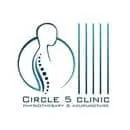Hemiplegia Is the complete paralysis of the half body, including the face, hand and the man in the same side of the body. Injury is not, at times, complete in the brain, and has partial paralysis in the body. The brain, as is known, is divided into two parts, the right and the left. Each of the two parts is responsible for half of the opposite body, that is, half the left brain is responsible for half of the right body and vice versa. Half-paralysis will appear in the left part of the body, if half the right brain is damaged. Physiotherapist neurology treatment
The nervous system is a complex network, which resembles the way the electrical system works. If, for example, the communication in the string leading to the lamp fails, it will not light up; that is what happens in the human body as well. The cortex of the brain is made up of nerve cells called neurons. These neurons produce long stretches, such as the train, that provide information to the other nerve cells present in the spinal cord. Graduated from the spinal cord stretches set in the form of bundles and form nerves that reach the muscles. The involuntary movements of the body, such as eating, writing, walking, stem from passing commands from neurons in the motor cortex. In the case of a section of the operating system, whether in the cerebral cortex or in the pathways that provide information to the spinal cord, paralysis will occur in the opposite direction of the affected area.
Six Causes of paraplegia:
- Brain bleeding or stroke.
- Brain tumor.
- Meningeal membrane inflammation
- Some immune diseases such as multiple sclerosis.
- Spinal cord injuries in the neck.
- Hypertension.
Symptoms of Hemiplegia:
Start with a feeling of numbness in the face and half the body and increase the inability to move half of the body.
Bleeding cases enter in coma, begins with muscle relaxation and then turns into muscle spasms, accompanied by problems with the seventh nerve in the face.
Patients with hemiplegia should be starting physiotherapy to get better and returning to normal life. Call us for more information about treatment

